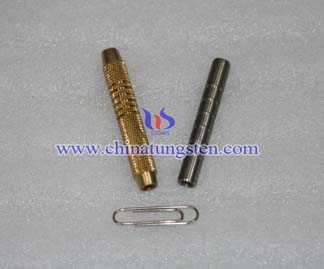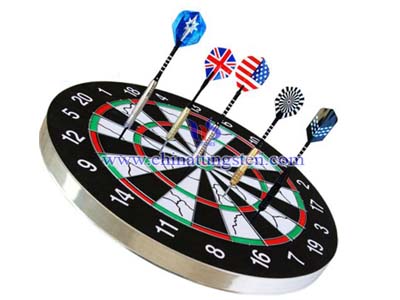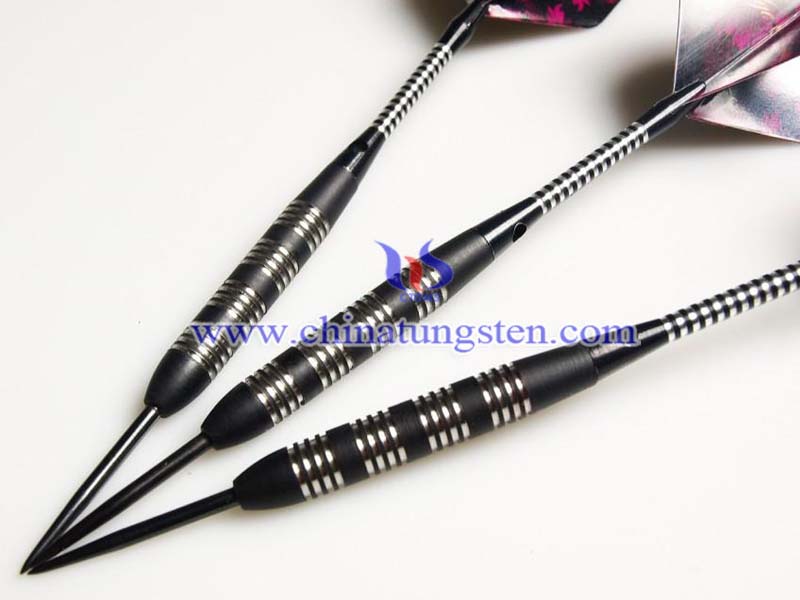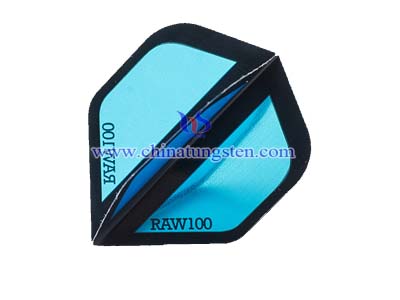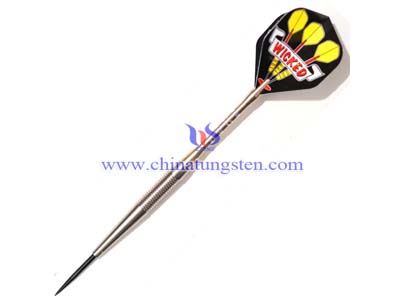Tungsten Dart Advantage
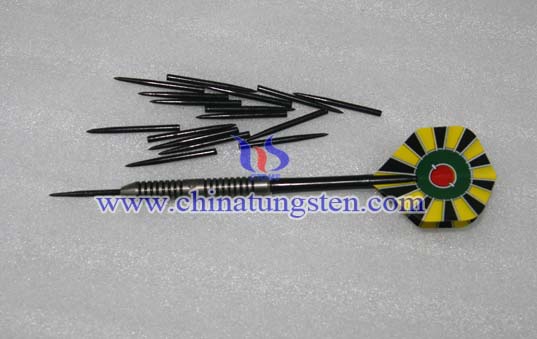
The dense material allows the dart to be the same weight as other darts, but up to half the size. Tungsten Dart allows the darter to throw tighter groupings with all three darts. So, it is easier to throw a ton80 (three triple twenties) with tungsten darts then it would be with wooden, brass, or nickel darts.
Tungsten darts are more expensive than darts made from brass or other materials. Do the benefits out weigh the additional cost? Why would I want a set of tungsten darts?
Tungsten darts are more expensive because of the nickel-tungsten material that the dart barrels are manufactured from. You will often see these in 70% tungsten, 80%, 85%, and 90% tungsten alloy. The higher the percentage of tungsten typically means a higher cost.
So why do all serious dart players throw tungsten dart? The density of the tungsten material allows the tungsten darts to have a thinner diameter. It allows this to occur, while still maintaining the same weight as a thicker dart. A thinner dart is an important component for higher scoring. Thinner darts occupy less real estate on the dart board. This allows you to fit more of these thinner darts into a small area. As thicker darts occupy more space on a dart board, they are easier to hit, resulting in dart deflections. The dart deflections throw your dart off course, which means you just missed the number you were throwing at.
Tungsten dart players have a definitive advantage over traditional brass. In addition to fewer deflections, they are being produced with great knurling patterns on the barrels. These provide a confident grip with less potential for slipping. I like the fact that these darts come in a variety of both steel tip and soft tip sets.

